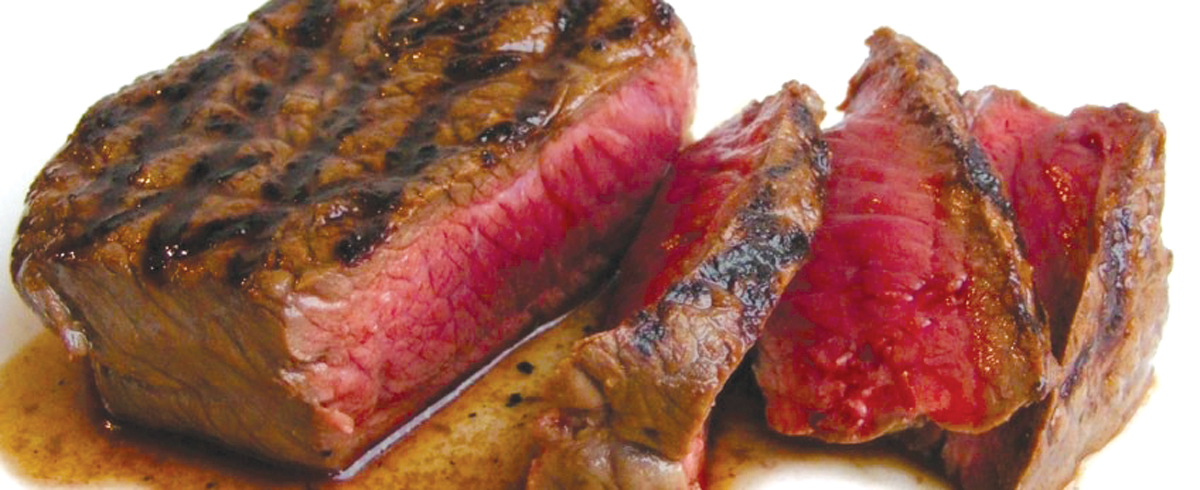What do you eat? Where does it come from?
by Evelyn Pyburn
Getting beef from farm to your dinner plate has always been a rather complicated and intricate business, but as consumers demand and expect more, there is another dimension being added to its complexity.
With over 65 percent of consumers saying they want to know more about the foods they eat, a relatively new industry is emerging, one that consumers should know more about in order to reap its benefits. The new dimension is third party verifiers — companies that monitor and audit producers of beef and other products to make sure that the claims they make about their product are true. Otherwise, questions Lainie White, owner of the Great Alone Cattle Company, “How would you know that what I say is true?”
There is much changing about the beef industry and in order to better familiarize consumers with what is going on, White recently sponsored a “Local Meat” seminar. White owns and operates a four-generation cattle ranch at Two Dot, Montana. “Our cattle are raised in the fresh air and running streams where the Big Sky brushes the Crazy Mountains of Montana,” reads their website, “The company and the ranch work to partner with our community of customers so you can enjoy all of the benefits of beef for health, well-being, and a great meal while enhancing our ranching legacy.”
Explaining third party verifiers at the event was Kelsey (Haughian) Aye, a customer verification specialist for Where Food Comes From, a top provider of certification and verification services based in Colorado.
Aye oversees and assigns auditors to visit farms and ranches (about 400 in Montana) to look at their operations, know the people involved, examine their documentation and records to make sure that they adhere to a specific set of standards. That they are actually doing what they claim to do. They authenticate and make transparent to consumers information about their food. Consumers have a right to trust that the information they get is authentic, accurate, and unbiased, said Aye.
Third party verification adds to the cost of production but producers who do it find their products bring more at market, more than enough to make it worthwhile. But, most say they pursue the process, not for increased returns, but because they have a passion for providing high quality products raised in sustainable ways that respect the land as well as their customers. At the same time achieving all those goals imposes greater work and many additional costs, for which the producer should be compensated.
Aye said that in their consumer surveys, when asked whether they will pay more for products labeled as being verified and certified, consumers usually say they will pay one to two dollars more above regular price. Their surveys also indicate that most consumers like knowing details about where and how their food is grown. They like to know “the story,” she said.
The service is available not only to the beef industry but to a wide range of other producers as well, including poultry, pork, lamb, and, vegetable producers, honey, vineyards, flowers, etc. Where Food Comes From is an umbrella organization for several divisions each of which targets a specific industry, such as the IMI Global Beef Passport Program which certifies beef as meeting a set of standards called BEEF CARE. There are also CARE standards for other products such as DAIRY CARE, PORK CARE, POULTRY CARE.
There are a number of aspects of IMI Global, which has been in business for 22 years. Each program specializes in a specific type of livestock producer. Not only does each type of production have specific needs, but specialized auditors are trained to understand those needs so they can intimately understand each unique business.
IMI is the largest installation resource company in North America. They offer turnkey installation expertise and OEM product deployment in fields such as manufacturing, supply chain, automation and robotics.
To make sure producers meet CARE standards auditors explore three basic aspects of a producers operation:
—Animal Care. They make sure the animals are as healthy and content as possible. Things they look at are spacing, access to food and water, nutrition plans, how animals are transported, etc.
— Environmental Stewardship. Consumers want to know that the farms and ranches have procedures and management plans in place. .
— People and Community. They make sure that the producer treats employees right, with worker safety protocols, emergency preparedness, and succession planning.
All programs require that an animal have an EID tag or in some manner can verify its age. EID tags are small “button-like” tags that are placed in the ear, although increasingly electronic cattle tags are used. The tags must be attached before an animal leaves its birth ranch and it is used to monitor the animal through each stage of processing.
In order to be verified as natural beef a calf must never have had any growth hormones, nor antibiotics. No ionophores (feed enhancers) or animal by-products. Many of the restrictions and certifications of them are required by many countries before they will accept beef as an import.
Certified meat products found at the meat counter may or may not be labeled as such, but whatever label a producer wants to put on their package, it must be approved by the USDA. They can even dictate the colors of a logo, explained Aye.


0 comments